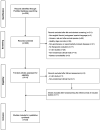Therapeutic Effect of EPA/DHA Supplementation in Neoplastic and Non-neoplastic Companion Animal Diseases: A Systematic Review
- PMID: 33910819
- PMCID: PMC8193331
- DOI: 10.21873/invivo.12394
Therapeutic Effect of EPA/DHA Supplementation in Neoplastic and Non-neoplastic Companion Animal Diseases: A Systematic Review
Abstract
Background/aim: The aim of this study is to identify and describe randomized controlled studies evaluating the therapeutic effect of EPA and DHA supplementation in companion animal diseases.
Materials and methods: A systematic search was conducted in PubMed database and the information collected was summarized and evaluated according to the risk of bias, using the revised Cochrane tool (RoB2).
Results: Twenty-three studies were eligible for inclusion: twenty performed in dogs and three in cats. A therapeutic benefit was found in canine allergic dermatitis, haircoat disorder, keratoconjunctivitis sicca, valvular disease, and canine and feline osteoarthritis. Dogs diagnosed with chronic heart failure and lymphoma and cats with allergic dermatitis also seem to benefit from supplementation with omega-3 fatty acids, but studies with improved methodological quality are needed to strengthen this evidence.
Conclusion: EPA and DHA supplementation has proven benefits in the adjuvant treatment of various neoplastic and non-neoplastic diseases in dogs and cats.
Keywords: DHA; EPA; Eicosapentaenoic acid; cats; docosahexaenoic acid; dogs; omega-3 fatty acids; review; supplementation.
Copyright© 2021, International Institute of Anticancer Research (Dr. George J. Delinasios), All rights reserved.
Conflict of interest statement
The Authors declare no conflicts of interest with regards to this study.
Figures
References
Publication types
MeSH terms
Substances
LinkOut - more resources
Full Text Sources
Other Literature Sources
Research Materials
Miscellaneous



